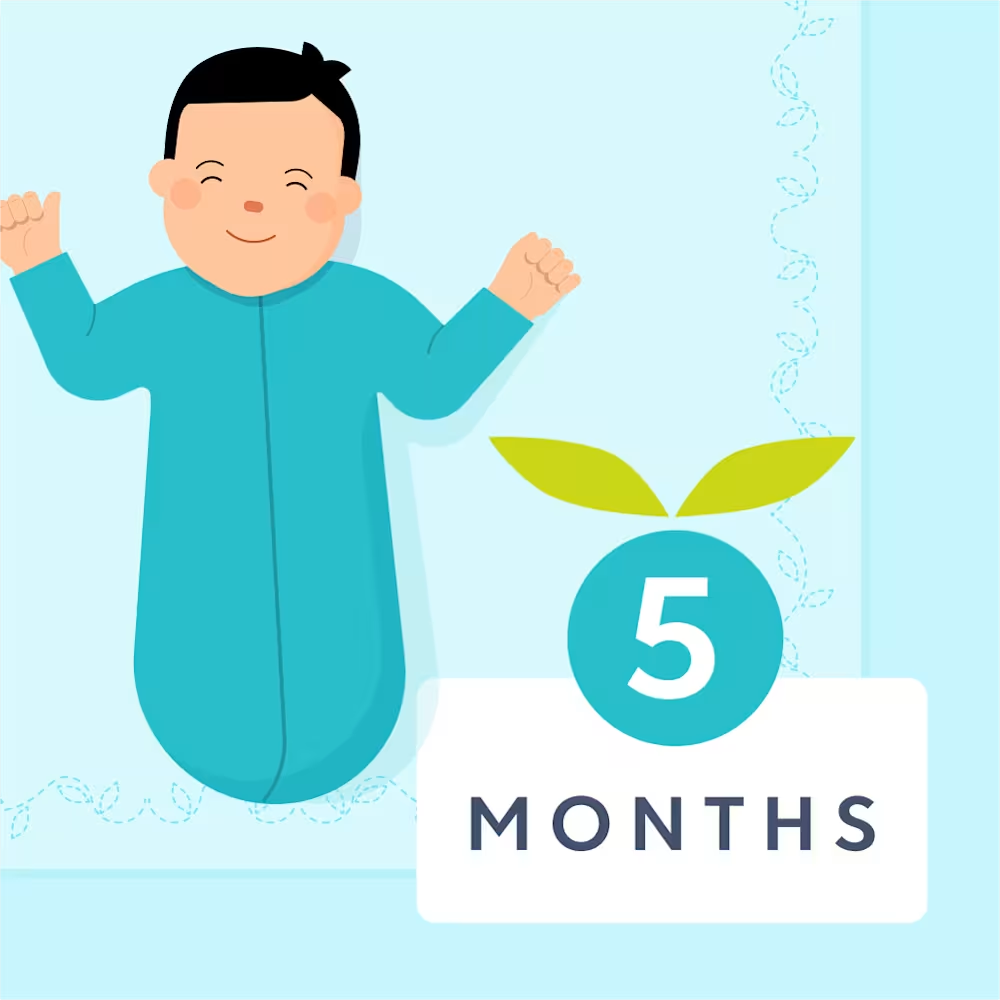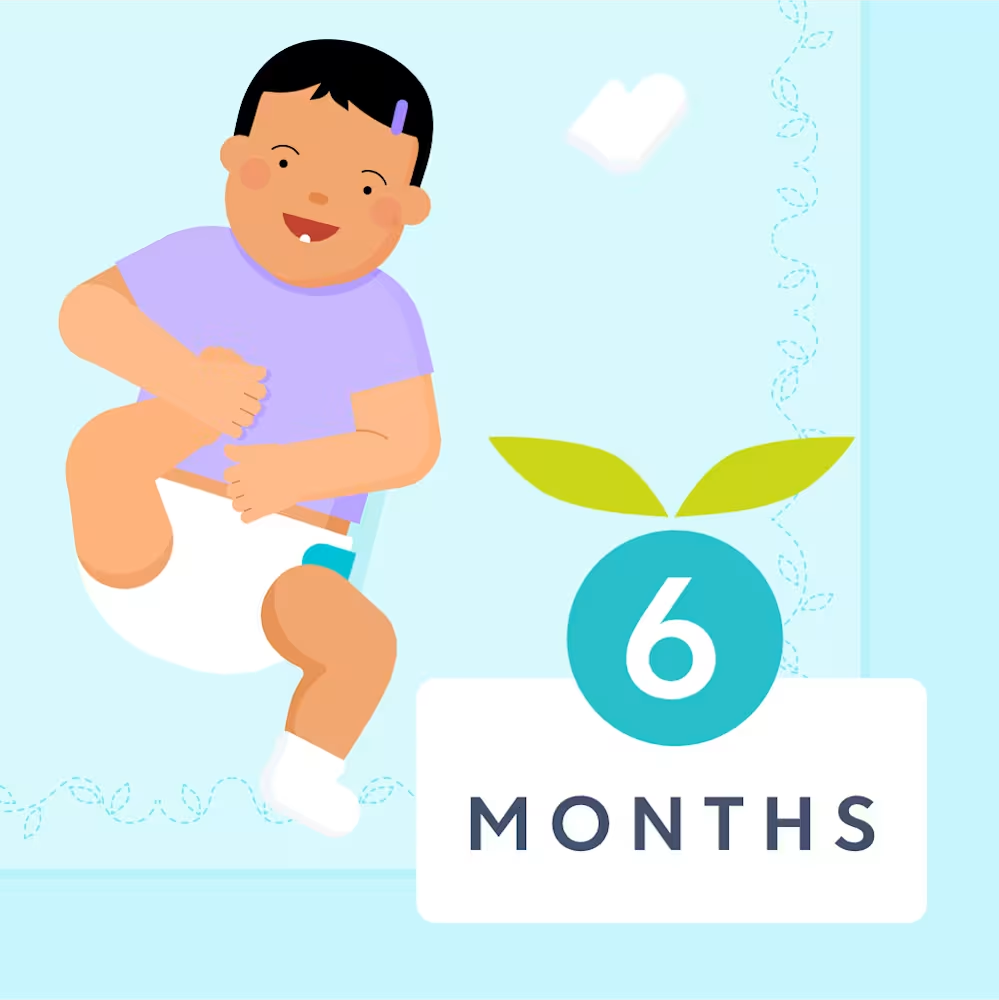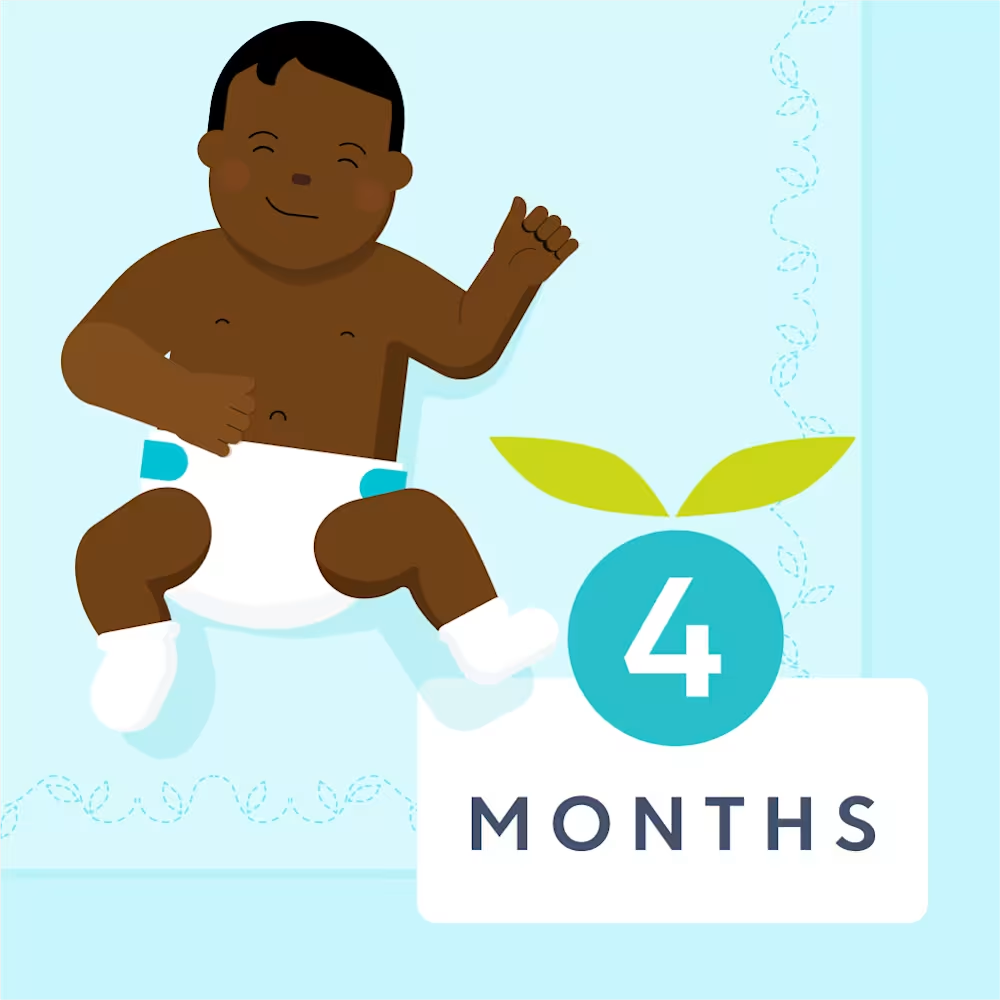Can you sleep train at 5 months? Sleep training tips for 5 month olds
Updated Dec 02, 2025

Even something as small as how a child falls asleep requires a lot of thought. If your baby is struggling with sleep and you’re wondering whether sleep training can help, you’ve come to the right place. You’ll have to be the one to decide if it's the right choice for your family, but we can provide you with the details you need to make the best sleep-related decision for your baby!
Table of Contents
What is sleep training?
We define as helping a baby learn to fall asleep independently, meaning teaching your baby to self-soothe at sleep times rather than rely on help (e.g. being rocked, fed, or held to sleep). There are a wide variety of sleep training methods, and we’ll go over the most popular strategies later in this article.
Can you sleep train 5 month olds?
At , sleep training results may vary. Some babies this age may already have established sleep routines and may be able to respond well to sleep training techniques, while others may still need more time to develop their own sleep patterns. Some babies are also going through the or still. It’s common for progress to be a bit up and down (rather than linear) at this age. If you decide to sleep train at this age, view the experience as an opportunity for your child to practice (but not yet master) independent sleep skills.
Wondering what the medical experts say? Once your baby is 4 months old, the American Academy of Pediatrics (AAP) [] suggests getting them into their sleep space when they are still drowsy, but not already asleep. This can be beneficial for the whole family, as it helps them learn to fall asleep independently and can lead to fewer night wakings [], which ultimately can mean more peaceful nights for everyone.
How many nights does it take to sleep train 5 month olds?
It may take a few days or even a few weeks before you see significant improvement. How long it takes partially depends on the method you use and your child's temperament. Generally, progress can be seen after 3 - 4 nights when using gradual or total extinction techniques, while gentle methods typically take longer.
Regardless of the technique you choose, it is important to be consistent and patient. Learning to go to sleep alone is a skill like any other, and it may take some time for your baby to get the hang of it.
Also keep in mind that babies under 6 months of age may conquer bedtime quickly, but struggle to fall back to sleep on their own throughout the night. The most important thing is to make sure your baby has plenty of chances to practice the art of falling asleep independently. However, they may not be able to fully master that skill until they are at least 6 months old.
Sleep training methods for 5 month olds
| Sleep training method | Does it work for 5 month old babies? |
|---|---|
| Gentle methods, including the chair method | Yes, these methods can help your baby learn to fall asleep in a new way. However, your baby may not be able to consistently fall back to sleep independently until 6 months of age. |
| Ferber method or gradual extinction | Yes, these techniques tend to be faster but can involve more crying in the short term. Generally, babies are able to make progress at bedtime, but may not be able to consistently drift back to sleep independently until they reach 6 months of age. |
| Cry it out or total extinction | Yes, this method can be suitable at bedtime for babies who become more distressed with regular check-ins. However, it is recommended that parents use a video monitor and carry out hourly safety checks. |
Here's the basic gist of these :
Gentle methods
Gentle sleep training methods focus on helping babies to gradually become independent sleepers. These techniques, such as “the chair method,” "fading," and "pick up put down," involve actively attempting to soothe your baby while they learn to fall asleep in a new way. This approach is ideal for parents who want to minimize the number of tears and don't mind taking more time for the process.
It might look like this: If your baby usually falls asleep while being fed, the process could begin by introducing rocking instead of feeding, then gradually reducing movement and eventually placing them in the crib while still awake. You would stay close by for support and then gradually reduce your touch and eventually your presence as a sleep association.
Gradual extinction methods
Graduated extinction strategies, like the , start by placing your baby in their sleep space while they are still awake. You then leave the room, but pop back in intermittently for brief visits. This could start from 3 minutes on the first night, and get longer from there. Or parents may opt for a static interval of 10 - 15 minutes.
This approach is preferred by those who want faster results and are comfortable with allowing their baby to cry for certain periods of time. It is sometimes seen as a variation of "cry-it-out" (CIO) since it involves leaving the baby in their sleep space and allowing them to cry for certain periods of time. The difference is that the parent will usually come back at regular intervals to try and soothe the baby before leaving again.
Cry it out
, or "total extinction," is a sleep training method that involves leaving a baby to fall asleep on their own, without any attempts to soothe them. The “rules” are pretty straightforward. Basically, you put your baby down in their crib after their bedtime routine, while still awake, and then leave the room so they can learn to fall asleep without help.
This is often the choice of parents who want a fast solution, but find that check-ins for calming can actually be more upsetting to the baby than leaving them alone. Some babies may be able to drift off within 10 minutes with this method, while others may cry for longer periods. It is essential to make sure your baby is well-fed, dry, and not in any physical discomfort before starting this technique, and that they are developmentally able to fall asleep without assistance. We also recommend using a video monitor and carrying out hourly safety checks.
Sleep training tips for 5 month olds
| Tip | Why it helps | What to try |
|---|---|---|
| Reset your expectations about sleeping through the entire night | At 5 months old, sleeping through the night isn’t always realistic for every baby. Still, meaningful progress is possible. | Focus on bedtime success first. Some babies still need a night feeding and often need help resettling between sleep cycles. Celebrate small wins! |
| Take a break if your baby is struggling | Short resets can calm both you and your baby, making sleep training feel gentler. | Step away for 10 - 15 minutes, share quiet connection time, then redo the last steps of your bedtime routine and try again. |
| Follow age-appropriate wake windows | The right timing prevents overtiredness and helps your baby fall asleep more easily. | Aim for 1.5 - 2.5 hours of awake time with 4 naps, or 2 - 3 hours once your baby transitions to 3 naps. Adjust as needed. |
Find more details below:
Tip #1 Reset your expectations about the entire night
Ahhh sleep training — we all want it to lead to 10 - 12 hours of uninterrupted sleep for our babies, but alas, that isn't always achievable at this age. Some infants may need to be a bit older before they can night wean and some may require more time to learn how to soothe themselves back to sleep. But progress can be made at bedtime, even if they struggle to keep those sleep habits throughout the night right now.
Tip #2 Take a break if your baby is struggling to make progress
If your little one is having a tough time and you've been working on bedtime for a while, why not pause the process and reset the situation? Instead of feeding or bouncing them to sleep (for example), take them out of their sleep space for 10 - 15 minutes and spend some calm time together in the bedroom. Then, do the last couple of steps of your bedtime routine over again and try for sleep once more. Often, our little ones respond positively to a mid-routine break — it's worth a shot!
Tip #3 Follow age-appropriate wake windows
Overtiredness can lead to more crying at bedtime. Try to avoid an overtired baby by following an based on wake windows. If your baby is still on the 4-nap-a-day plan, expect 1.5 - 2.5 hours of awake time in between snoozes. But once they transition to 3 naps, look for 2 - 3 hours of awake time.
Can you sleep train 5 month olds for naps?
We typically recommend working on bedtime first, since it’s often easier to make progress at night before moving on to day sleep. However, if night sleep is already decent, or you prefer to work on naps first, you can do so following these steps:
1. Start with the first nap of the day.
2. For babies taking 3 or 4 naps, sleep train for the first two only.
3. Give it an hour; if your little one still hasn't dozed off, take a 30 - 60 minute break.
4. Do the nap routine again to signal that it's time to snooze.
5. If your baby still won't nap after the second try, skip it for the day.
6. Move bedtime up if naps are shorter or skipped.
How to sleep train 5 month old twins?
To make sleep training a success, start by creating a consistent and calming bedtime routine that both can follow. Of course, you have to keep in mind that each twin may have different needs, so be flexible and adjust your approach accordingly. Make sure their , and aim for at least 3 - 4 hours of daytime sleep. With a bit of patience and perseverance, you'll get there!
What to do if sleep training for 5 month olds not working
Aim to consistently ensure that your baby is falling asleep on their own at bedtime. If they sometimes doze off on their own, but other times need your help, this can really slow down their progress.
If you're feeling stuck in the process, try putting your baby in their bed a bit more awake — this helps them not associate your help with falling asleep. If you're still having trouble and need expert help, consider a customized sleep plan from .
Takeaway
If your baby falls asleep with your assistance and it's impacting your family's sleep, sleep training may help. We see families make significant progress toward their goals when they change the way their little one falls asleep at this age.
It's important to remember that babies may continue to need some help throughout the night even if they’re sleep trained at this age.
With many methods to choose from, the best one for your family depends on your family's situation, parenting style, and your child's sleep patterns and temperament. And since sleep training isn’t a good fit for every family, you might opt-out, and that’s okay too.
Sleep training 5 month olds FAQ
If you're curious about what lies ahead with sleep training, glimpse into the future to see what you might experience when it comes to . And look back on .
Share article:
Note: The content on this site is for informational purposes only and should not replace medical advice from your doctor, pediatrician, or medical professional. If you have questions or concerns, you should contact a medical professional.
2 Sources
Table of Contents
Share article:






